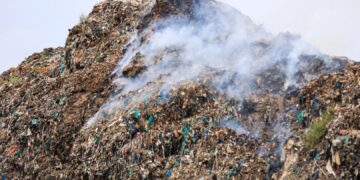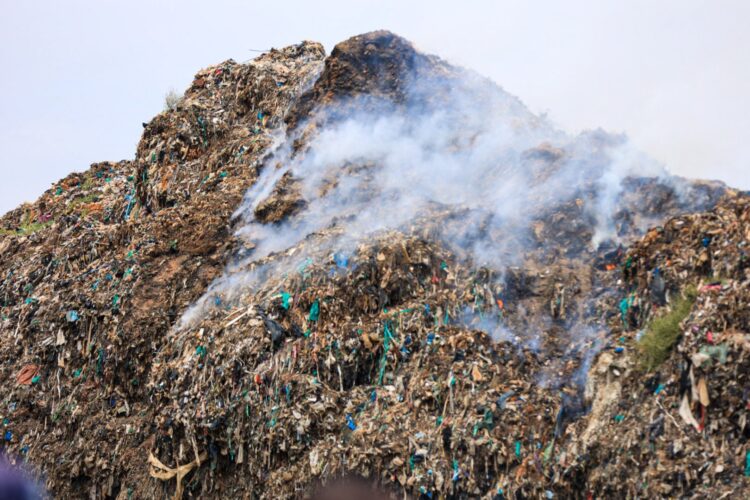OPINION
In the heart of Kampala, the Kiteezi Landfill has long been a crucial site for waste disposal. However, the recent fire that ravaged the facility has brought to light the fragility of such operations, raising critical concerns about environmental safety and waste management practices.
This article delves into the causes behind the fire, the environmental fallout, and what can be done to prevent similar disasters in the future.
Kiteezi Landfill, one of the largest waste disposal sites in the region, handles thousands of tons of waste annually. Located in Kiteezi, it serves as a primary site for industrial, residential, and
commercial waste. The landfill’s capacity has allowed it to manage the growing demand for waste disposal services, but it has also drawn criticism for its environmental impact. The landfill’s management has often been called into question, with accusations of improper waste segregation and limited environmental oversight.
The Kiteezi Landfill fire, which broke out on 8th February, 2025, took both local residents and authorities by surprise. Initial reports indicate that the fire may have been sparked by improper disposal of flammable materials, or heat buildup in certain waste areas. The fire quickly spread due to the densely packed waste and high temperatures, and it took emergency services several days to bring it under control.
Though the immediate cause of the fire is still under investigation, it has highlighted a series of operational weaknesses at the landfill. According to experts, the landfill’s outdated infrastructure and inadequate safety measures may have contributed to the rapid escalation of the fire.

The consequences of the fire extend far beyond the immediate destruction. As the blaze raged, harmful smoke filled the air, releasing toxic pollutants into the environment. These chemicals pose a serious threat to public health, particularly for vulnerable groups like children, the elderly, and people with respiratory conditions.
Additionally, the Contaminants from land fill disrupted the ecosystem and possibly contaminate drinking water supplies. The fire also left behind hazardous materials, such as heavy metals and plastics, which could further pollute the surrounding land for years to come.
In the aftermath of the fire, local authorities and emergency services sprang into action, working around the clock to contain the blaze. While their efforts were commendable, many believe that the response was reactive rather than proactive. The fire highlighted the lack of adequate preparedness and the need for better emergency protocols at waste disposal sites.
Environmental organizations have called for an investigation into the landfill’s safety standards and the role of regulatory agencies in overseeing such facilities. Despite regulations in place, the fire underscores the ongoing challenges in ensuring proper monitoring and enforcement of environmental protection laws.
The fire at Kiteezi was not an isolated incident. It points to broader systemic issues in waste management. Poorly managed landfills, lack of sufficient firebreaks, and inadequate segregation
of hazardous materials can all contribute to the risk of such incidents. The Kiteezi Landfill’s management has faced criticism for years over its failure to adopt modern waste management technologies and ensure the safety of both its workers and the surrounding community.
It’s clear that the problem is not limited to Kiteezi alone. Similar landfills across the country are often plagued by the same issues, with waste management strategies that fail to meet the needs of
growing urban populations. Without better infrastructure and regulatory oversight, incidents like this will continue to occur, with disastrous consequences.
To prevent future disasters, significant changes need to be made in the way waste is handled at landfills. First and foremost, landfills must implement more robust safety measures. This includes regular safety inspections, better waste segregation practices, and the installation of advanced monitoring systems to detect potential fire risks early on.
Government agencies must also enforce stricter regulations on landfill operations. This could include mandating modern waste treatment technologies that reduce the risk of fires, such as composting, incineration, and recycling.
Additionally, landfills should be required to create and regularly update emergency response plans to ensure a swift and coordinated effort in case of an incident.
Finally, local communities must be part of the conversation. Greater public awareness and involvement in waste management can help create a culture of environmental responsibility, where everyone plays a role in reducing waste and protecting the environment.
The Kiteezi Landfill fire serves as a grim reminder of the vulnerabilities in our waste management systems. While the fire has caused significant damage, it also presents an opportunity to address the root causes of such disasters. With stronger regulations, improved
infrastructure, and better community engagement, we can work toward a safer and more sustainable waste management system that protects both public health and the environment for
generations to come.
By Leticia Ahiriirwe,
The writer is a Communications Officer – WoGEM Uganda.
Email: ahirirweleticia100@gmail.com








































